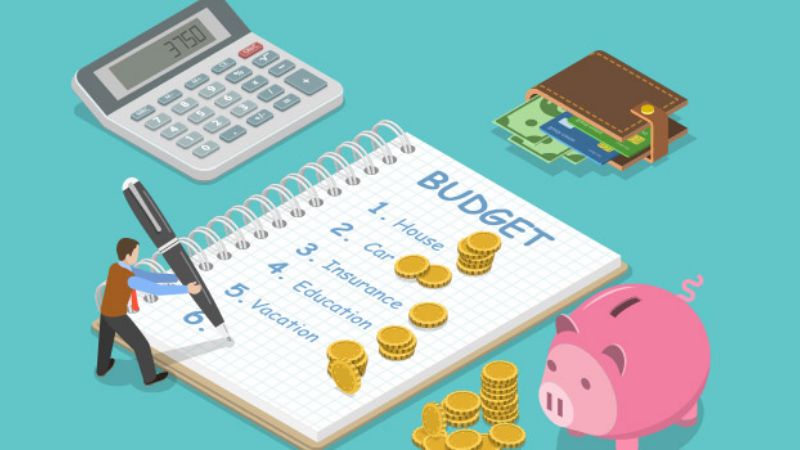Personal Budgeting Made Easy: Budgeting is the most essential step when it comes to managing your income efficiently. Budgeting has many benefits, but the main benefit includes tracking your expenses and controlling them as per your choice. It helps in reducing unnecessary expenses and also helps you in saving your hard-earned money for better purposes. However, many people do not know how to create a monthly budget.
This is because there are some essential items in the budget through which a person can track his expenses and manage them efficiently. This article contains a complete guide on how to make a monthly budget and manage your expenses wisely.
Understanding Personal Budget
Personal budgets are financial plans that help individuals monitor their expenses on a daily, monthly or annual basis. A personal budget often includes a detailed description of a person’s smallest and largest expenses. Moreover, it can also help in classifying the areas with maximum expenses and finding out ways to reduce them.
An efficient personal budget can also help you achieve your financial goals and make your future plans accordingly. With the help of a financial budget, you can adjust your expenses and meet your financial circumstances efficiently.
Many questions arise on how to create a personal budget that is efficient and effective. Personal budgeting is different for each person, but there are some basic steps to take when preparing a personal budget. Tell us about them in detail.
Importance of budget making
The budget plays an important role in achieving the financial targets. It is found that making a personal budget increases the skills of financial management and achieving goals. Budgeting in personal budget is necessary for many reasons. Here are some of these reasons:
- Awareness of financial situations
- Helps in saving more money
- Being prepared in case of emergency
- Reduction in loan amount
- Helps in making better financial decisions
- Management of expenses from overspending
Must Read : STOCK MARKET FOR BEGINNERS: HOW TO TURN YOUR SAVINGS INTO PROFITS IN 2024
How to create a personal budget in 6 easy steps?
Creating a personal budget involves following 6 essential steps. These steps determine whether your personal budget properly fits your parameters and helps you achieve your financial goals.
1. Establish financial objectives
Prioritizing your goals is the most essential part while preparing a financial budget. Goals are measured and then classified into short-term and long-term basis. Short-term goals involve daily expenses while long-term goals require larger investments.
For this, primary steps like how much money should be spent and where it should be spent. Must be tracked and reviewed regularly to keep oneself motivated towards adjusting financial objectives towards the goal. This increases the chances of achieving milestones in personal budget.
2. Track and categorize expenses
Tracking and classifying expenses in the budget is important as it helps in making financial decisions. Expense tracking can be done based on credit and debit details. Classification of expenses mostly depends on lifestyle and daily expenses.
In an age of increasing technology budget-tracking tools and software can be of great help. These tools ease the work of regularly calculating expenses and comparing them to your actual budget. At the end of a specific period, the budget can be analyzed and reviewed to determine whether objective goals are being met.
3. Separate needs from desires
In personal budget if you are planning to differentiate between needs and wants then a period should be specified such as how to make a monthly budget based on a realistic approach. Needs include the factors necessary for life. These factors could be daily expenses on transportation, medicine, food and rent.
Every person has a desire to fulfill. They can own various luxuries of life. If any expenditure is based on basic survival, then it is included in the category of necessity otherwise it comes in the category of expenditure.
4. Estimate and plan for future expenses
A gist should know about building a personal budget to anticipate and plan for future expenses. The first step should be to budget for fixed and variable expenses and ban excess expenses. On removing expenses from income, a certain amount of savings should be appropriated. These savings also play an important role in emergency situations. Develop a mindset to save money in any situation.
If you need some help managing money now and in the future, there are many technologies available that can guide you through money management skills for free.
5. Create an emergency fund
Creating an emergency fund involves setting aside a specific amount of money for future expenses. Know how much money you might need in any emergency, and aim to set aside a small portion of your monthly budget for emergency situations, an emergency fund.
Non-essential expenses can also be included.
If you are unable to save money for emergencies, include any tax returns as part of an emergency fund. Try to maintain a separate account for this emergency fund to keep them safe. These funds can also provide financial security.
6. Prioritizing savings
Prioritizing savings is another essential aspect of consumption. Set aside a budget as an expense each month to ensure fixed savings. To save more, create a budget to save a specific amount over a specific time period. If you incorporate this habit of saving money for a few months, then after some time it will become an automatic part of your personal budget. Start saving money with a small amount for an individual, then gradually increase the amount of money.
Final Words
Creating a personal budget can help in managing finances. It improves financial stability. Personal budget is important as it leads to achieving the goals easily with the record of all the expenses.

